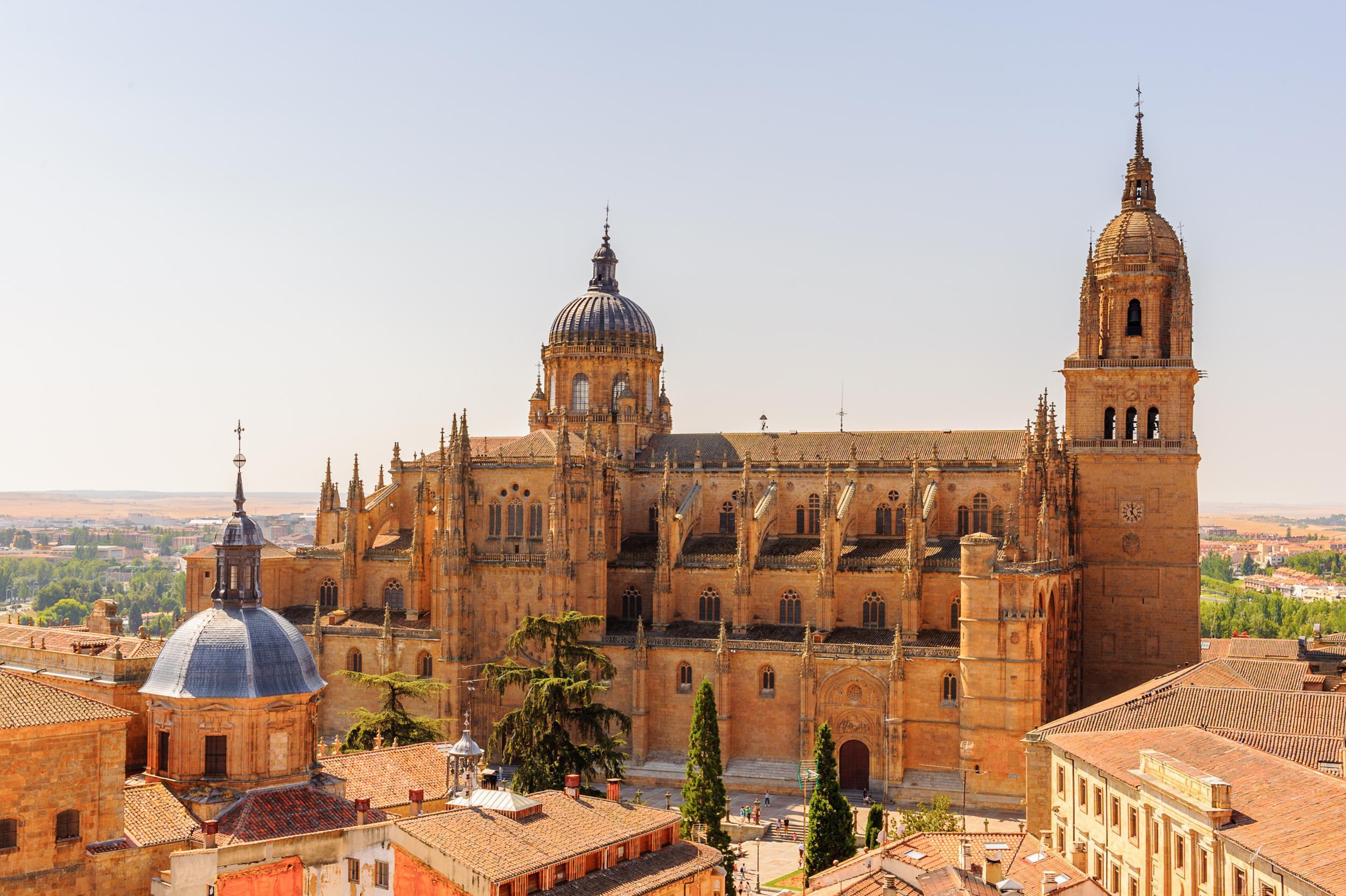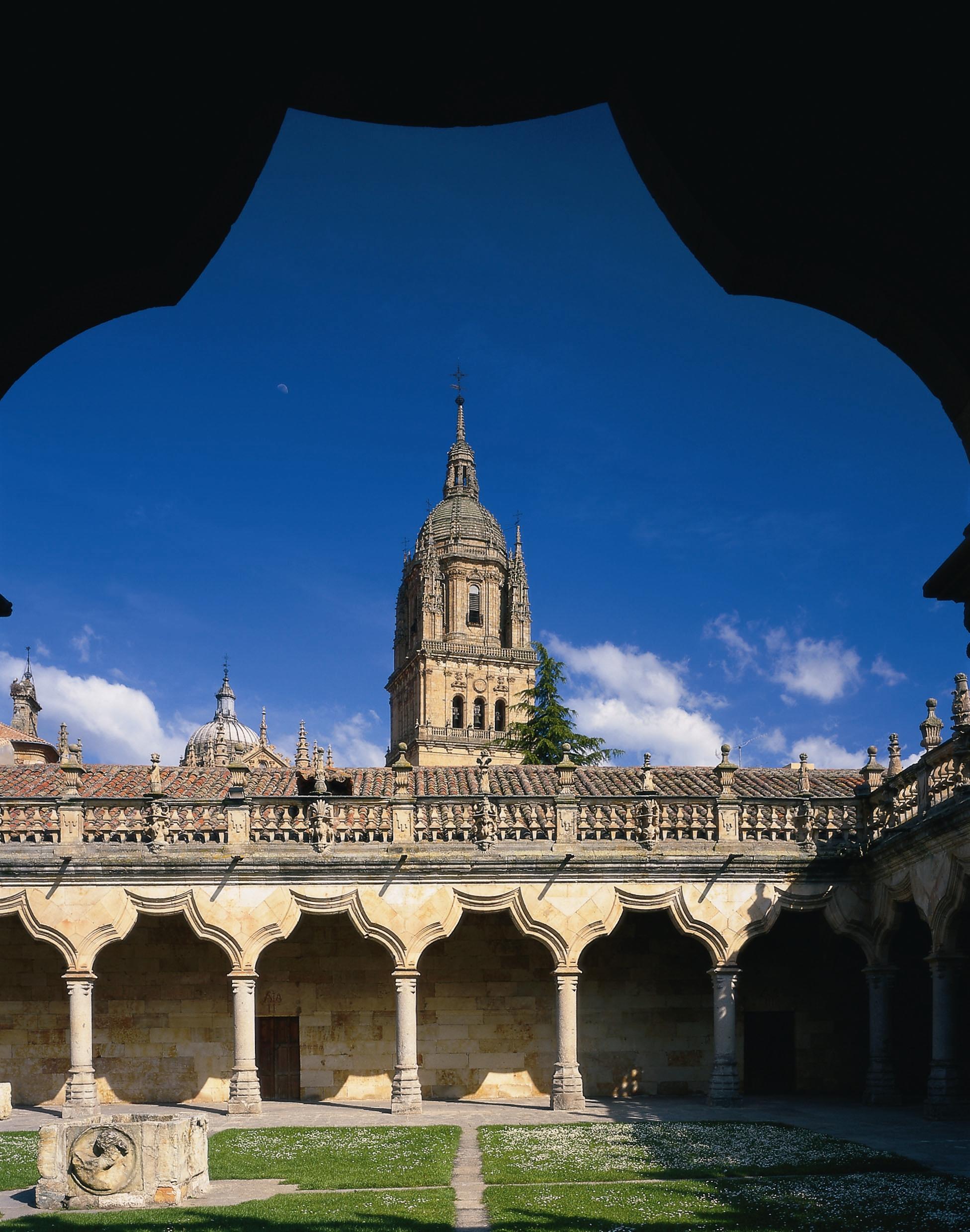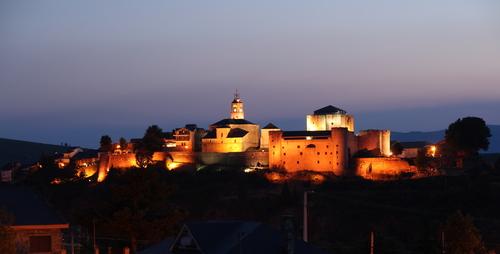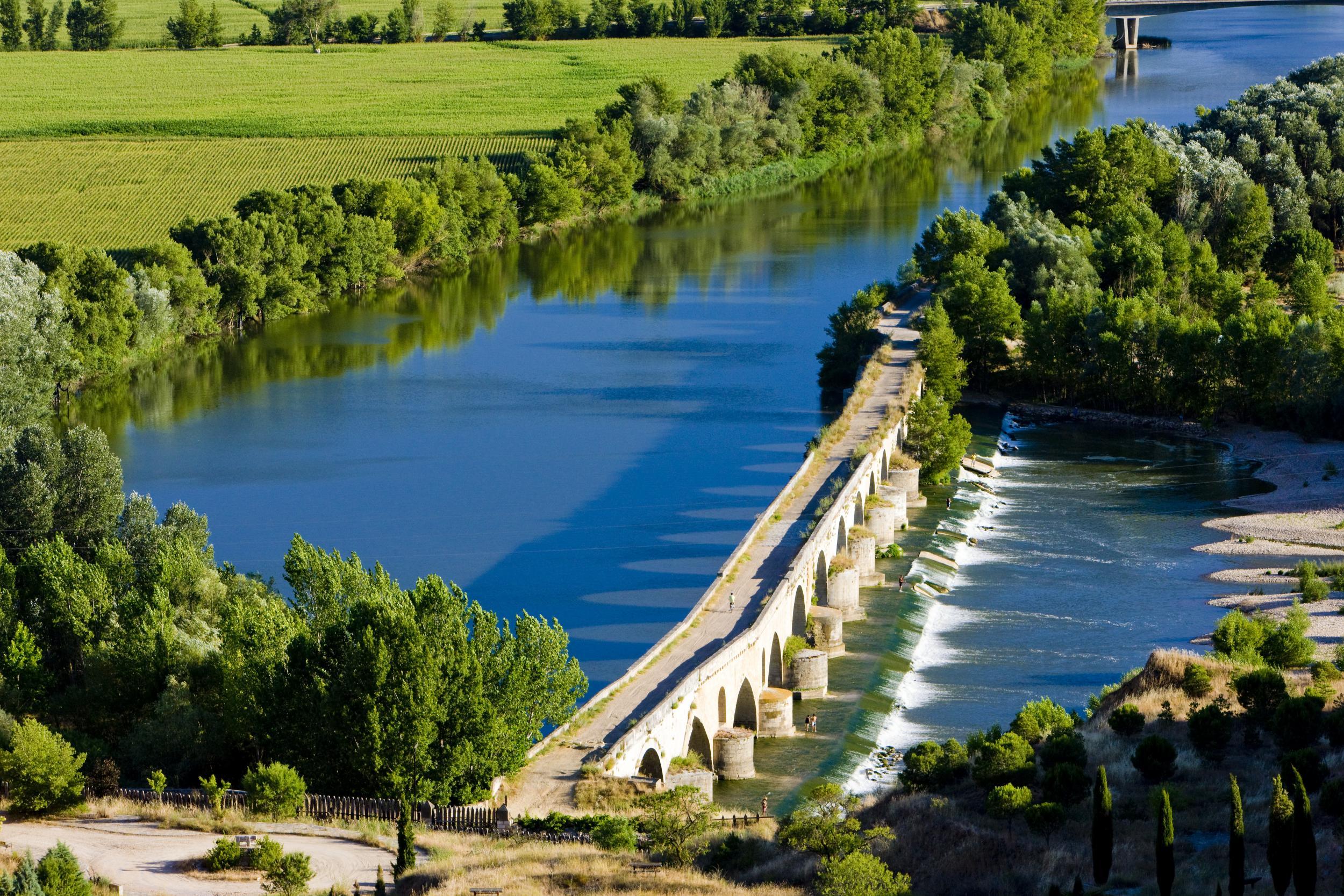The Independent's journalism is supported by our readers. When you purchase through links on our site, we may earn commission.
Castile y Leon, Spain's little-known historic heartland
This vast, sparsely populated and largely unsung province contains the nation's creation story - and a surprising number of storks

Strolling through the old city of Salamanca, the thought had no sooner occurred that the mellow sandstone of the Romanesque townscape was so homogeneous that it would make a suitable backdrop to filmed Shakespeare – Two Gentlemen of Verona, perhaps, or Romeo and Juliet – when I passed by the old university to find the road covered in straw. The American ABC network had just finished shooting Still Star-Crossed, a 10-part TV adaptation of novelist Melinda Taub’s Romeo and Juliet sequel, imagining the Montagues and Capulets in the aftermath of the young lovers’ deaths.
Minutes later I was able to climb the stone steps of the old university’s inner courtyard and stand where the inevitable balcony scenes were apparently shot. Founded in 1134, the university is the third oldest in Europe after Bologna and Oxford – and with a student population of 60,000 (half of them from overseas), Salamanca is as much a university town as either of them.
Salamanca, Zamora, Toro, Burgos, Valladolid... mention these historically important cities to the average Briton, in my experience, and he or she will look at you as blankly as if you’d suddenly started speaking in Basque.

They are not obvious city-break destinations like Bilbao or Barcelona, or traditional sun-and-sangria escapes along the costas, but the cultural jewels of the vast Spanish region of Castile and Leon – a sparsely populated expanse of vinyards and corn fields north-by-northwest of Madrid that stretches from the border with Portugal and Galicia across Spain’s northern plain – was once the bread basket of Europe and is still intensely agricultural. The region also contains the creation story of Spain.
El Cid – scourge of the Moors (actually a mercenary who also hired his services to the Islamic caliphate) – was born near Burgos; Isabella of Castile and Ferdinand of Aragon, the great unifying and centralising Catholic monarchs who introduced the Spanish Inquisition, were married in Valladolid; Philip II – builder of the Spanish Armada – was born in a palace next to the cathedral; Miguel de Cervantes started writing Don Quixote in the city; and Christopher Columbus died here.
The region was a frontline in the clash of Christian and Muslim civilisations during the “reconquista” and again in the Peninsular wars of the Napoleonic era. And although local tour guides may pass quickly over the connection, Castile and Leon also provided Franco with his conservative Catholic heartlands. Valladolid was the de facto nationalist capital during the Spanish Civil War, which started 70 years ago this month, while Burgos was described by one Civil War observer as “nationalist to the very stones”.

And if you like Romanesque churches (I do; they give a more direct connection with the medieval mindset than the later Gothic style), then Zamora is your place. This beautiful old town on the River Douro has 23 Romanesque churches, more than anywhere else in Europe. And because the province of Castile and Leon is largely devoid of industry, the air is clean and the 11th- and 12th-century buildings look like they were put up yesterday.
A curiosity of many of these religious edifices is that their bell towers and porticos seem to attract migrating storks. A protected species in Spain, it’s surprising that the local authorities don’t make a mascot of the birds and their habit of nesting atop their monuments.
Seemingly more revered are the fighting bulls reared in the region destined for the corridas and the black pigs that roam through the oak woods fattening themselves on acorns before being transformed, post-mortem, into Iberico ham – one of the mainstays of the local cuisine.
Arroz de Zamora – rice cooked with ham - is the local equivalent of paella, while milk fed lamb is another speciality. Castile and Leon is landlocked, and fish has to be transported from neighbouring Galicia, or caught in the Douro, the river that crosses the region and eventually empties into the sea in Porto in Portugal.
The Douro Valley – referred to as the Duero in Spain – is renowned for its wines, its 13 appellations including Ribero de Duero and the increasingly renowned Toro. I stopped at a huge, only recently planted, industrial winery near Toro, where almost all the tempranillo reds, verdejo whites and rosés were destined for export, much of it to Asia. With its vast stainless steel vats, the bodega wasn’t remotely romantic, but the resulting vintages were undeniably tasty.

Toro and its Romanesque hilltop cathedral is the location this year for an annual travelling exhibition organised by the regional council to show off its artworks – and it has many of these to choose from. Over half of all Spain’s cultural artefacts are to be found in Castile and Leon, and the excellent, imaginatively curated exhibition (the theme for 2016 is water) runs until November.
Castile takes its name from the 300 or so castles dotted around the region, testimony to its troubled history. Between the jewel-like towns and cities, the largely flat countryside feels sparsely populated – two and a half million people in an area the size of Ireland, or Belgium and Holland combined.
Valladolid is the region’s de facto capital, and only an hour’s high-speed train ride from Madrid, its most accessible city. The unfinished cathedral is a gloomy monster – intended to be larger than the Vatican it’s now a mish-mash of architectural styles that still, after 500 years, looks like a bodger’s backyard from some angles.
More intimate by far is the apartment that housed Cervantes during the four years in which he lived and worked in the city as a tax inspector. Cervantes died in the same week in April 1616 as Shakespeare, but unlike his English contemporary, it seems that the 400th anniversary of the Spanish author’s death isn’t being marked with any particular fanfare.
Such modesty is in keeping with this historically and culturally rich, but unsung heartland of Spain – which even gives its name to the Spanish language, Castilian. If you want a break from the tourist hordes packing into the country’s more obvious destinations this summer, it might be an answer.
Travel essentials
Getting there
The gateway is Madrid, served by a number of airlines including Iberia, British Airways, easyJet, Ryanair, Air Europa, Norwegian and Monarch.
Ave Trains connect the capital with Valladolid (renfe.com).
More information
Join our commenting forum
Join thought-provoking conversations, follow other Independent readers and see their replies
Comments